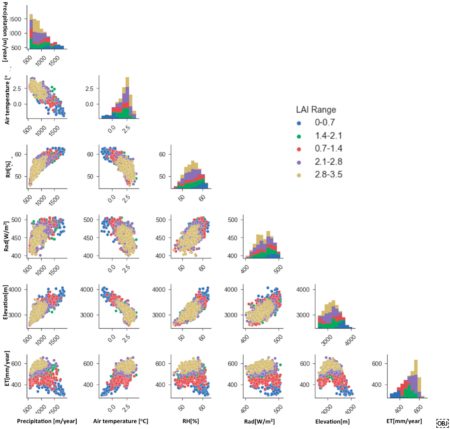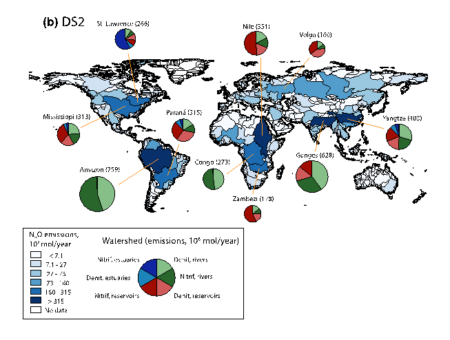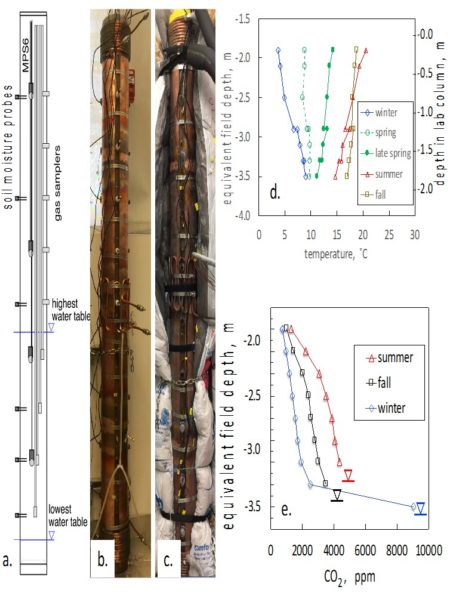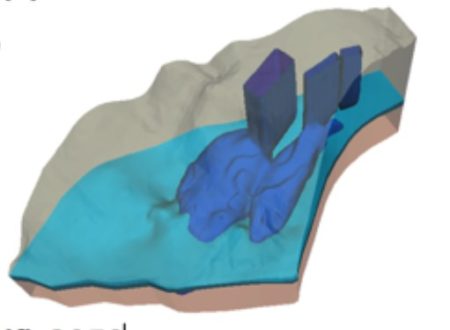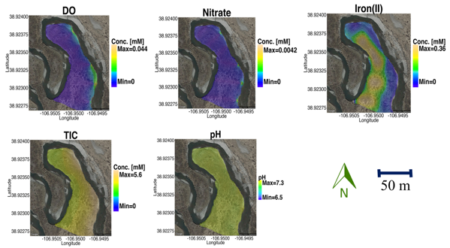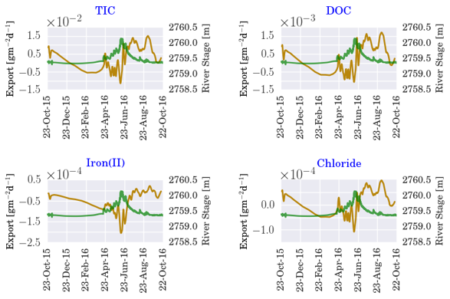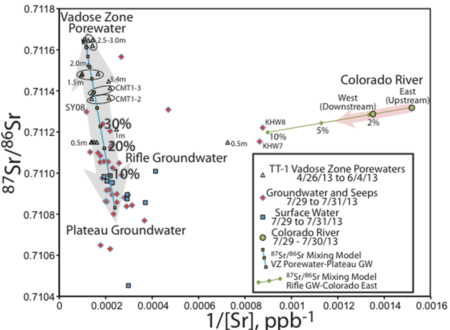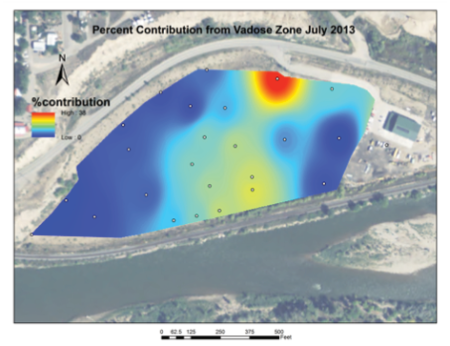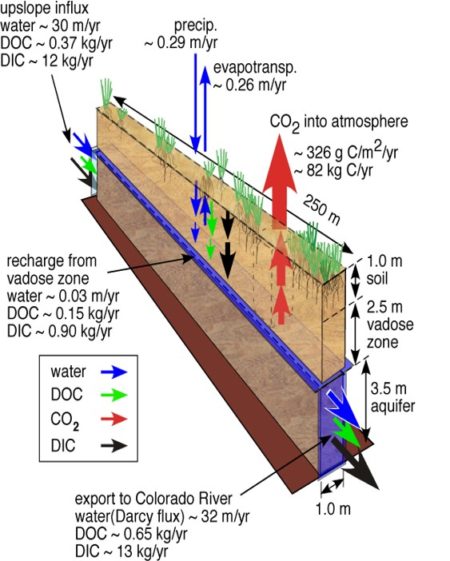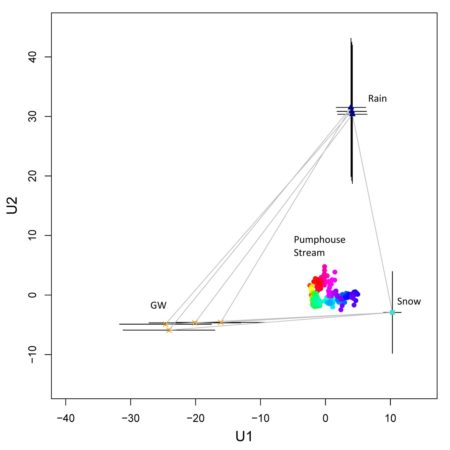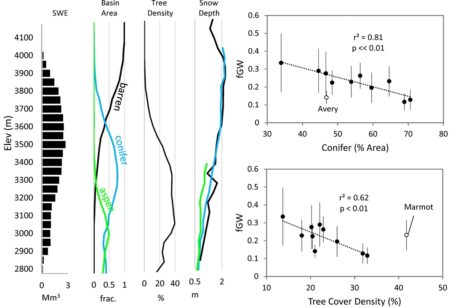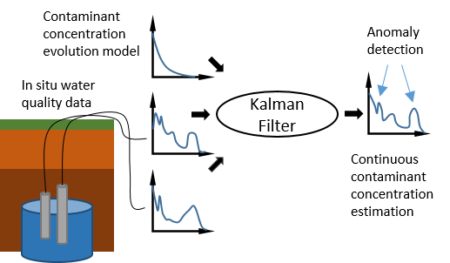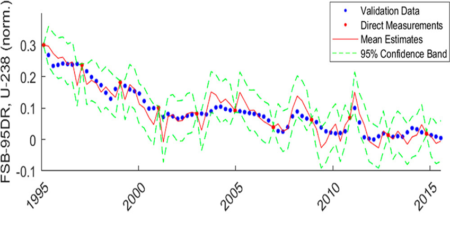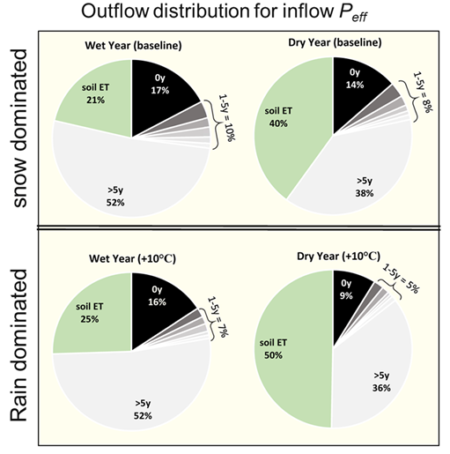
Lag of wet year (left column) and dry year (right column) inflows to exit the basin via stream discharge in the future when no temperature increase (upper row) and temperature increase =10°C (lower row).
Several models (PRMS-PEST-SAS) were coupled and applied to the snow-dominated East River Watershed to explore changes in water budgets and seasonal and annual responses in the streamflow transit time distributions.
This research was the first to apply the coupled PRMS-PEST-SAS modeling system to a large-scale (85km2) snow-dominated watershed. Results provide insight into how variation of the water budget and streamflow transit time are responding to climate change in this alpine snow-dominated system.
Summary
The modeling results show that during the snowmelt period of the year, the East River released younger water during high storage periods across seasonal and annual timescales (an “inverse storage effect”). However, wet years also appeared to increase hydrologic connectivity, which simultaneously flushed older water from the basin. During years with reduced snowpack, flow paths were inactivated and snowmelt remained in the subsurface to become older water that was potentially reactivated in subsequent wet years. Dry years were found more sensitive to warming temperatures than wet years through marked increases in the fraction of inflow lost to evapotranspiration at the expense of younger water to increase the mean age of streamflow.
Citation
Fang, Z., Carroll, R., Schumer, R., Harman, C., Wilusz, D., Williams, K., “Streamflow partitioning and transit time distribution in snow-dominated basins as a function of climate.” Journal of Hydrology. (2019) 570, 726-738. DOI: 10.1016/j.jhydrol.2019.01.029
